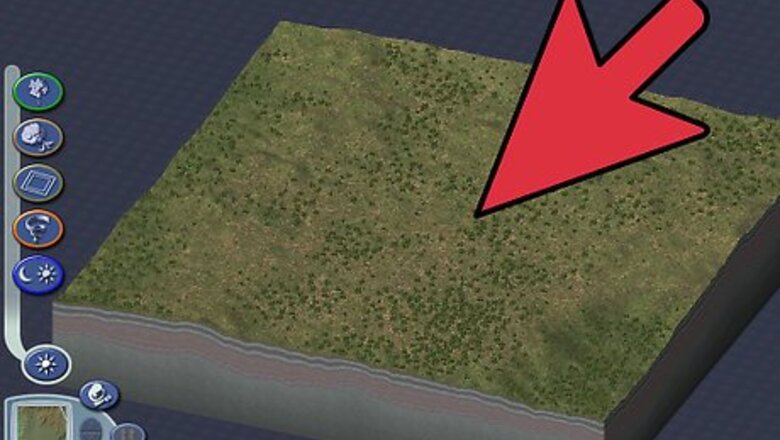
views

Create a new region. Pick plains. At first, you have the chance to be "God" and create valleys, mountains, mesas, lakes, animals, and so on. Try making a plateau in the center and covering the land with trees. Do not make animals. Eventually, you will destroy their habitat and make the llama people aggravated. Once you've created a sensible and mostly flat region, turn on mayor mode and name your city any desirable name of your choosing.
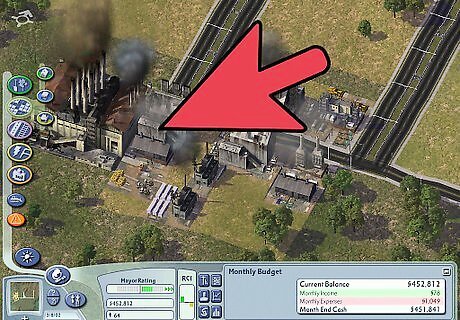
Choose what to build and develop first. The key to making a successful city is the order in which you build things. Another vital ingredient is extreme patience. All successful cities take hours of careful placement and risky decisions. In the long run, they all pay off. The first thing you should do is place a natural gas power plant in the corner of your city. If you have rough terrain, this may be more difficult. If you intend on building on large city, mostly flat or completely flat land is suggested. You can edit the terrain in God mode if it is rough.
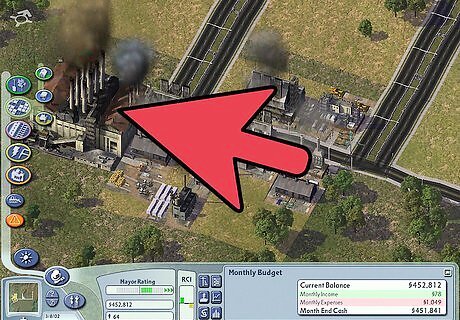
Add power once your zones have been set up. Building power-plants in the middle of the city is a good move because you can evenly distribute the power. You can also use utility lines if necessary. Wind power plants should be built on top of windy mountains and hilltops, and therefore should never be built away from the city's center.
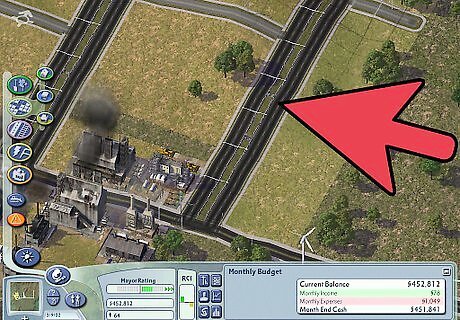
Connect power to your city's neighborhoods. Either place some power lines from the plant to your neighborhoods or place a road adjacent to the plant and have it drawn down to the bottom middle of your city. Once there, create a decent-sized medium-residential zone and at least one medium-sized park. You can also drag a train line down in the same method- any way you want, as long as Sims can commute between areas. If a zone isn't connected, your zones won't be of much use.
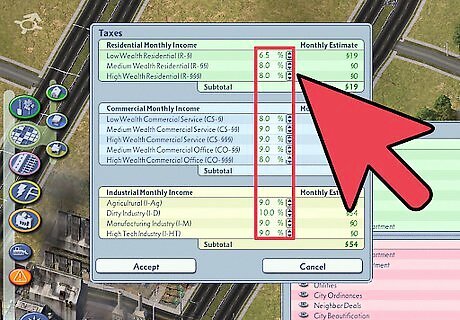
Stop there and pause the simulation. Unlike Sim City Classic, 2000, and 3, you do not need to create every building and rely on resource trade. Sim City 4 will cream you if you use this tactic. Instead, you will rely on taxes. Although neighbor deals can be helpful, you have to create a city to deal with. No already-made cities are neighboring you. So you will need to open the tax menu and crank high, medium, and low wealth residential taxes to at least 8.5% and all wealth industrial to 9%. Move Commercial taxes to 7.5% and un-pause the simulation.
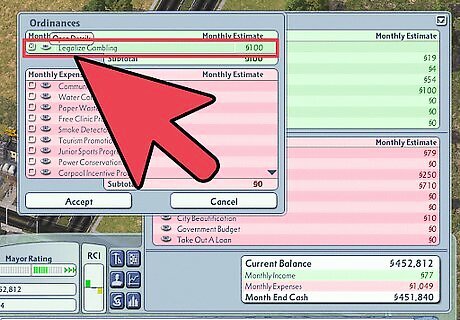
Make some money. Go to the city ordinance menu. First, click "legalize gambling." This will add 100 dollars to your income. Then click the "smoke detector ordinance." This will be explained later.
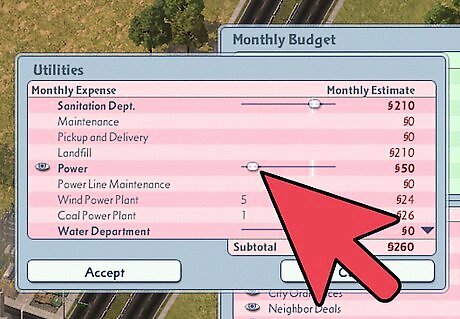
Go back to the power plant and take its funding down to one light bulb efficiency. This will help a lot.
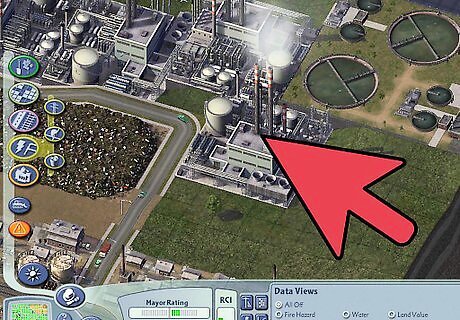
Create a small area of dense industry away from the neighborhood and near the power plant. Make sure it has a road connection, otherwise it can't create jobs and will be a waste of your money. Now make a road connection above the power plant and create some agricultural zones. The skyscrapers and big cities won't be here for a while. Many successful cities start as cruddy industry towns or rural villages.
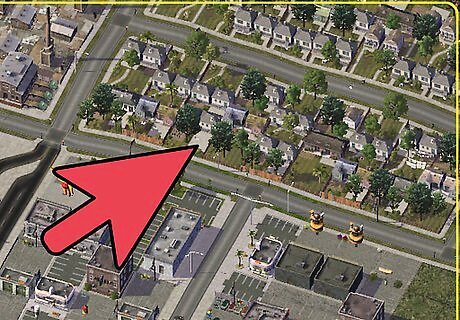
Expand your medium density neighborhood just a little. Remember, do not build civic buildings or water systems yet. At this point, they are not mandatory.
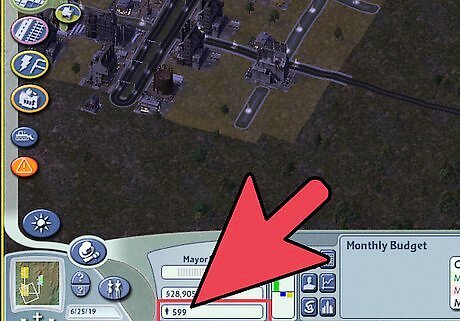
Wait a bit and let things happen. Your city population should have at least 350 residents before the next step.
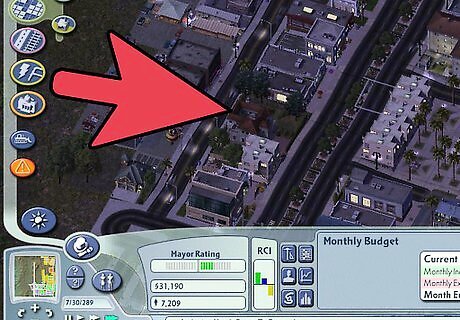
Get to the far side of your neighborhood, away from pollution and power plants. Create a small low-density commercial center. Do not make it big! Commercial zoning is fundamental. If it overwhelms the residents, it will be abandoned, but it will never grow the middle-class and high-wealth office if it is ignored.
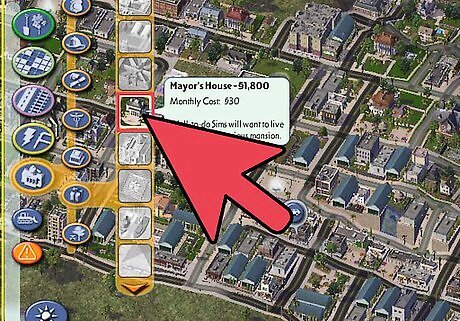
Wait until your population reaches 500 for this next step. By now, you have the mayor's house and should have placed it in the neighborhood. It will attract mid and high-wealth residents after a while. Now your income should be at least 500 away from your expense. And it would help if you were pulling in some small cash now. Now let's build some civic. You can only afford one thing right now, so don't break your budget. On one side of the neighborhood, build an elementary school. Look at the number of students. It should be far from the maximum capacity. Take the funding down to a point where the capacity is about 20 over how many students you have. Now on the other side of the neighborhood, build one local library. Its funding should be simultaneous to the school. Leave it that way. Now expand the residential area a little more; build one more farm, and let the game sit for a while. At this point, you should have a population between 850 and 1,450. Hopefully, you've at least reached 1,000. You should have a house of worship by now and should have placed it near the neighborhood. Now expand your commercial center just a little same with the neighborhood, and we should be ready for some new ideas.
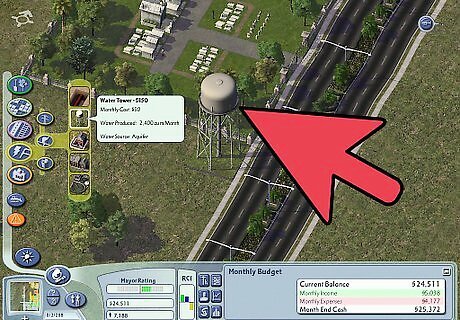
Build one or two water towers. Build them near the commercial center. If you build near the power plant and industry, you will need to invest in an expensive water treatment plant. Only place the pipes under the residential and commercial zones. Once finished, expand the dense industrial zone and let the game sit.
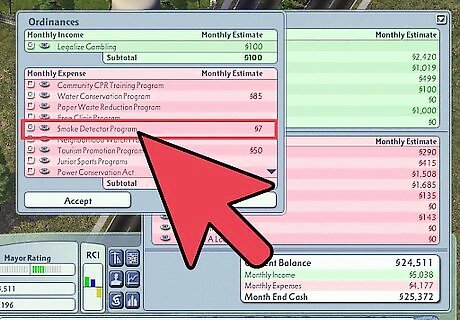
Have smoke detectors! They help your budget greatly. By now, it's time for another civic, and that's a small fire station. Your industrial zone should be blazing right now. Civics(and landfills/incinerators) are costly investments, unfortunately, they will become valuable necessities. Don't protect fires until one is created. At this point, your industrial zone should have caught on fire, create a small fire station near the industrial zones and take its funding way down. Even if the red ring doesn't cover the whole city, which it won't, the firemen will still drive out to the neighborhood. Back to smoke detectors, without this ordinance, you would have to invest in fire coverage before water and education. Water and education are much more significant than fire coverage. Smoke detectors prevent most fires until this point in time. And by the way, by this point in time, your population should be somewhere between 1,600 and 2,500.
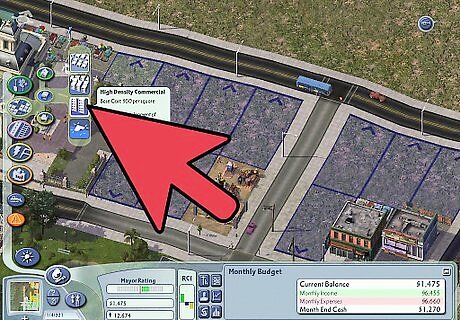
Continue expanding slowly and maybe consider making your low-density commercial into a medium-commercial zone. Remember to ignore Neil Fairbanks and Monique Diamond and that bunch because you know who is best as a mayor. And we know what the people want.
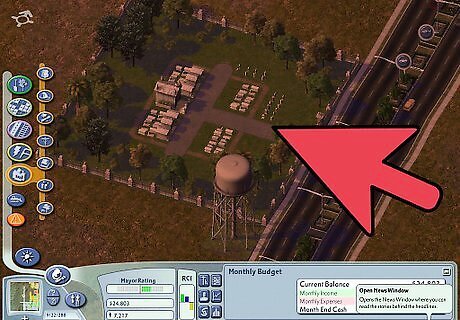
Stay patient. You should be receiving the cemetery, and a few high-tech industries should be appearing to remember patience and order. Hospitals and Police Stations won't be too soon in your future. Maybe around a 5,500 population just for one. Go hospital first, then landfill, police, and eventually around a 17,000 population you get a recycling center and an incinerator. Landfills can really decrease the beauty of your city and are expensive. If desired, use recycling plants instead. Build other civic buildings as necessary. Police stations, hospitals, colleges, and schools will become available as time progresses and the need is noticed.
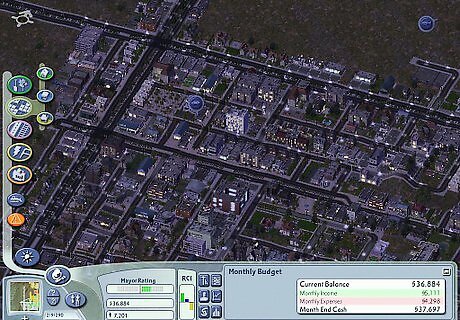
Make some neighboring cities, start lowering taxes, and slowly expand. Eventually, you will have zero farms and an incredible demand for a high-rise. Dense zoning will come for that and a full power/water system. Consider airports and private schools. Never accept a business deal unless it's a casino. And make sure your casino has a police station nearby. Soon you'll have skyscrapers, landmarks, and 2% tax rates.
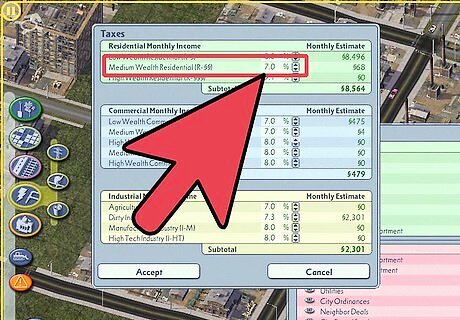
Maintain your city's budget. Maintaining a balanced budget is key to keeping your city afloat. Make sure taxes don't exceed 7.2% for the middle class. Try giving across-the-board tax cuts to make all Sims happy. Make sure to keep commercial taxes lower than industrial and residential taxes. Roads spending should never be cut! Never raise taxes to increase the surplus. Increasing your taxes by a large percent will make Sims move out of your city, decreasing your monthly income and city population.




















Comments
0 comment